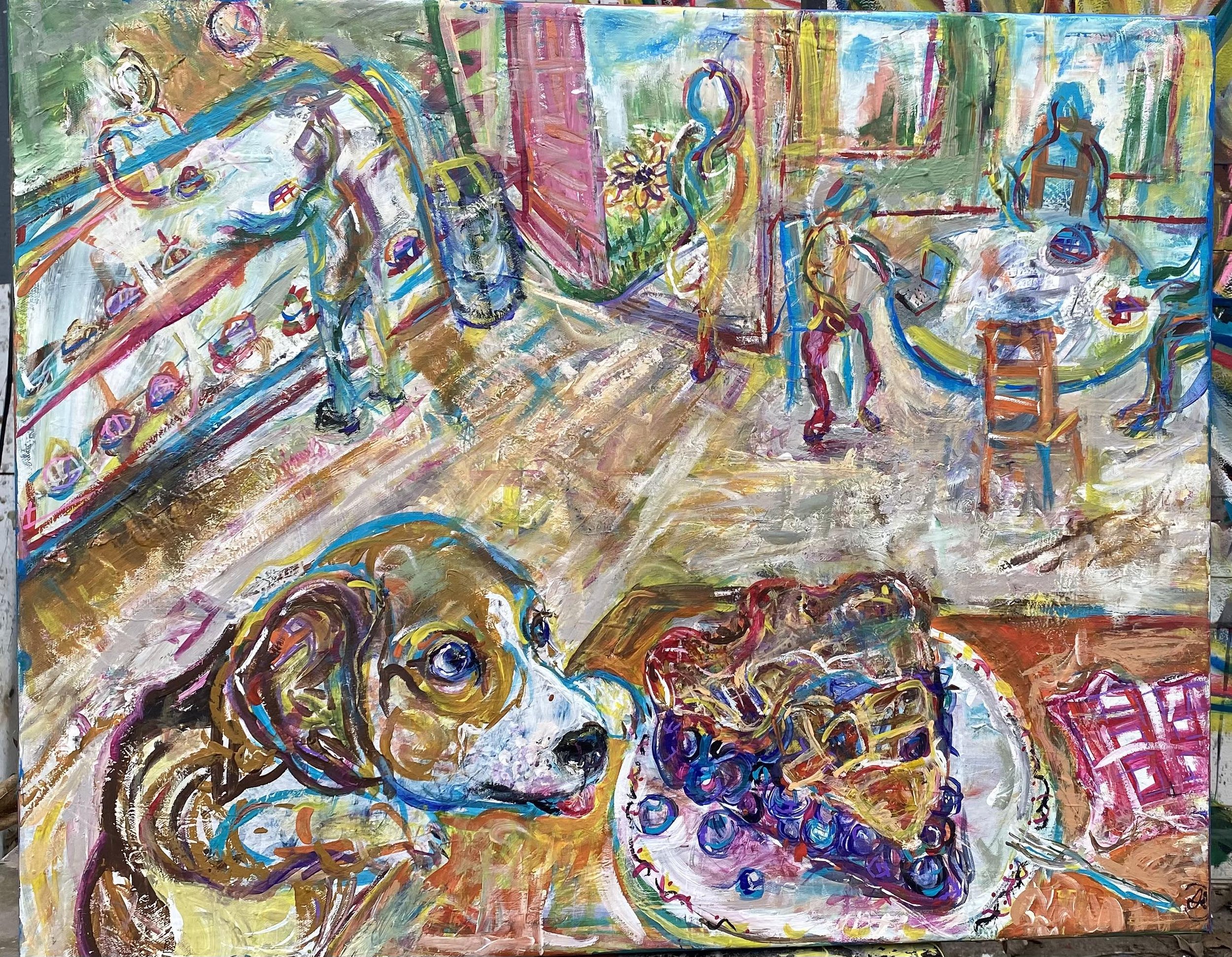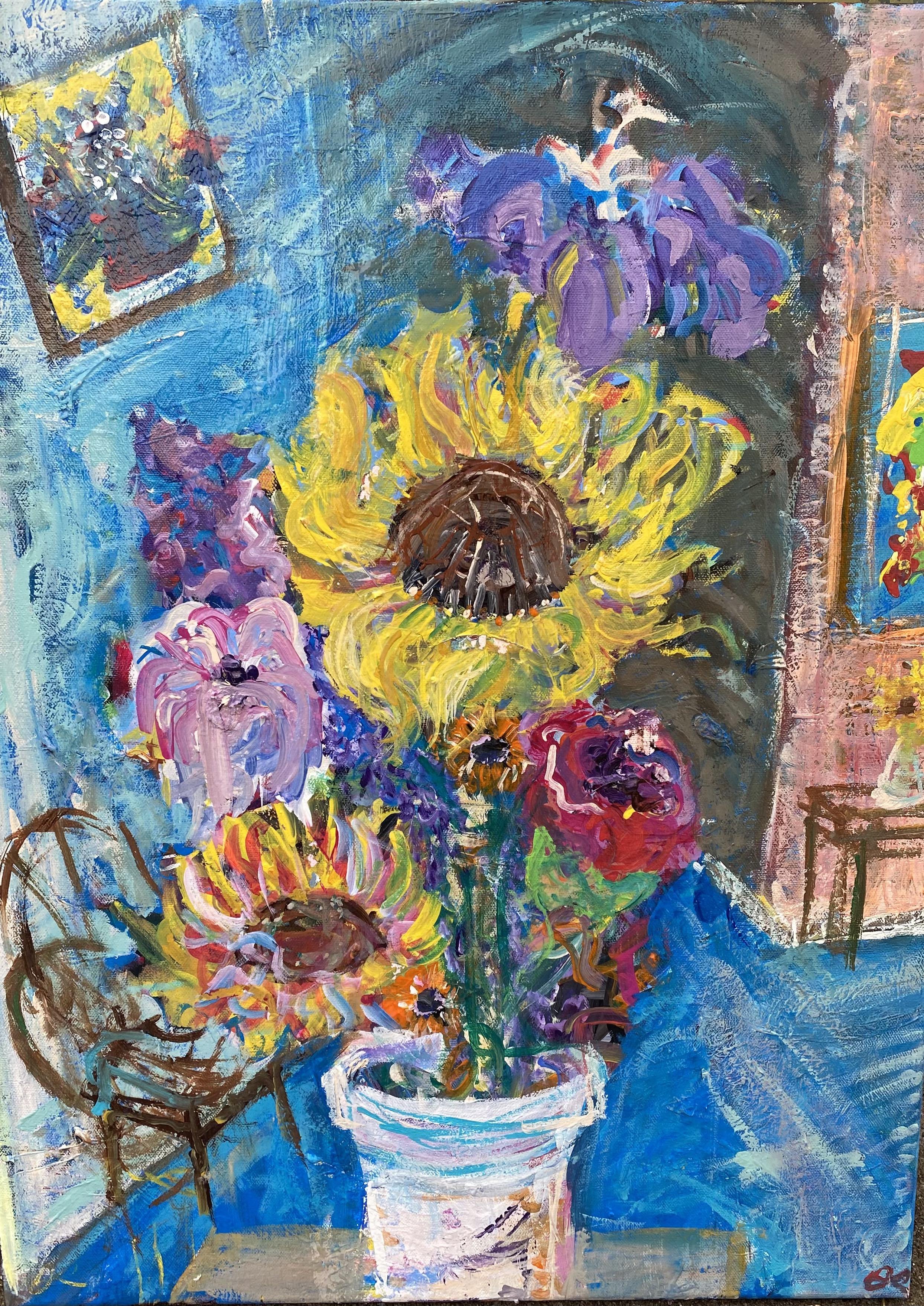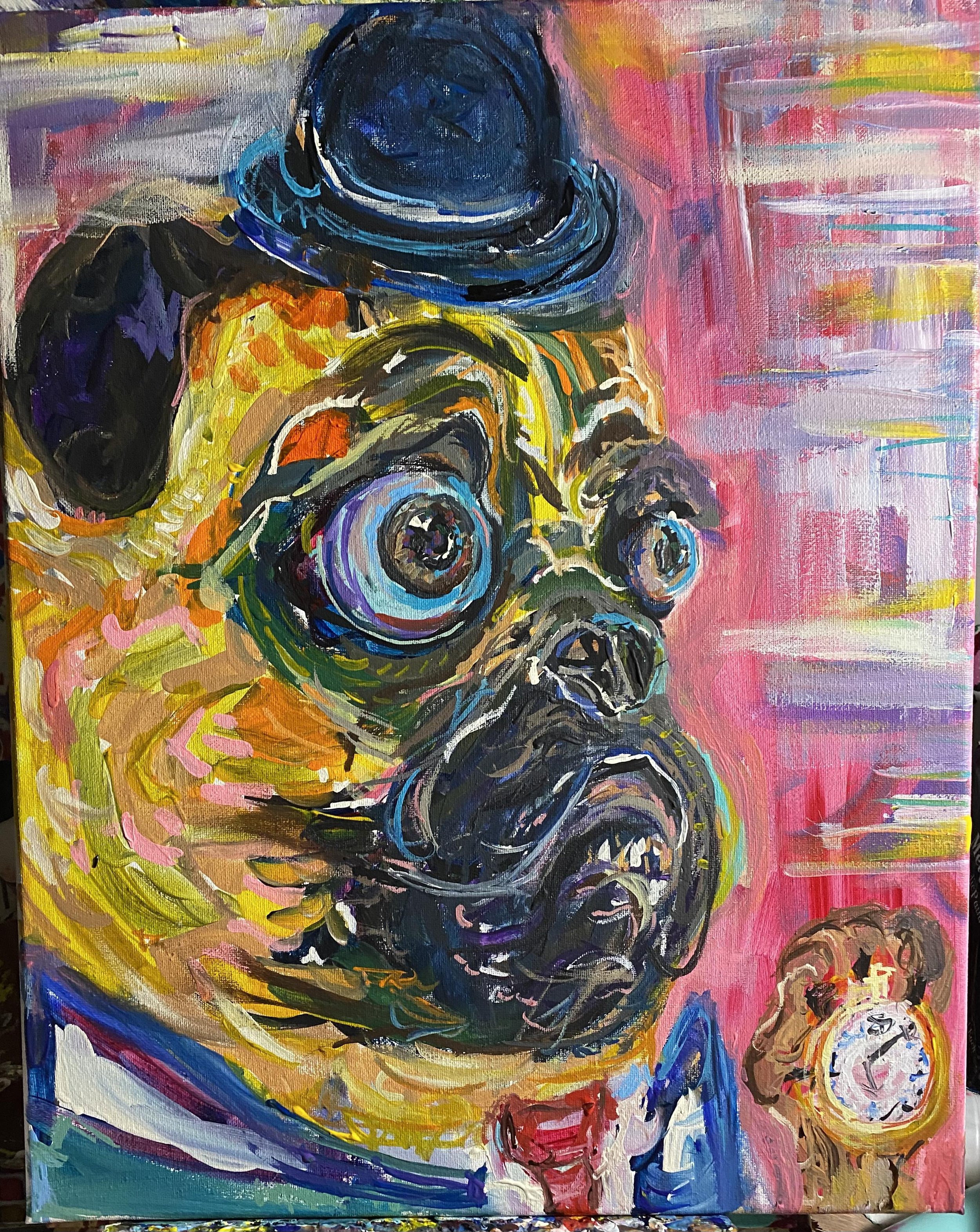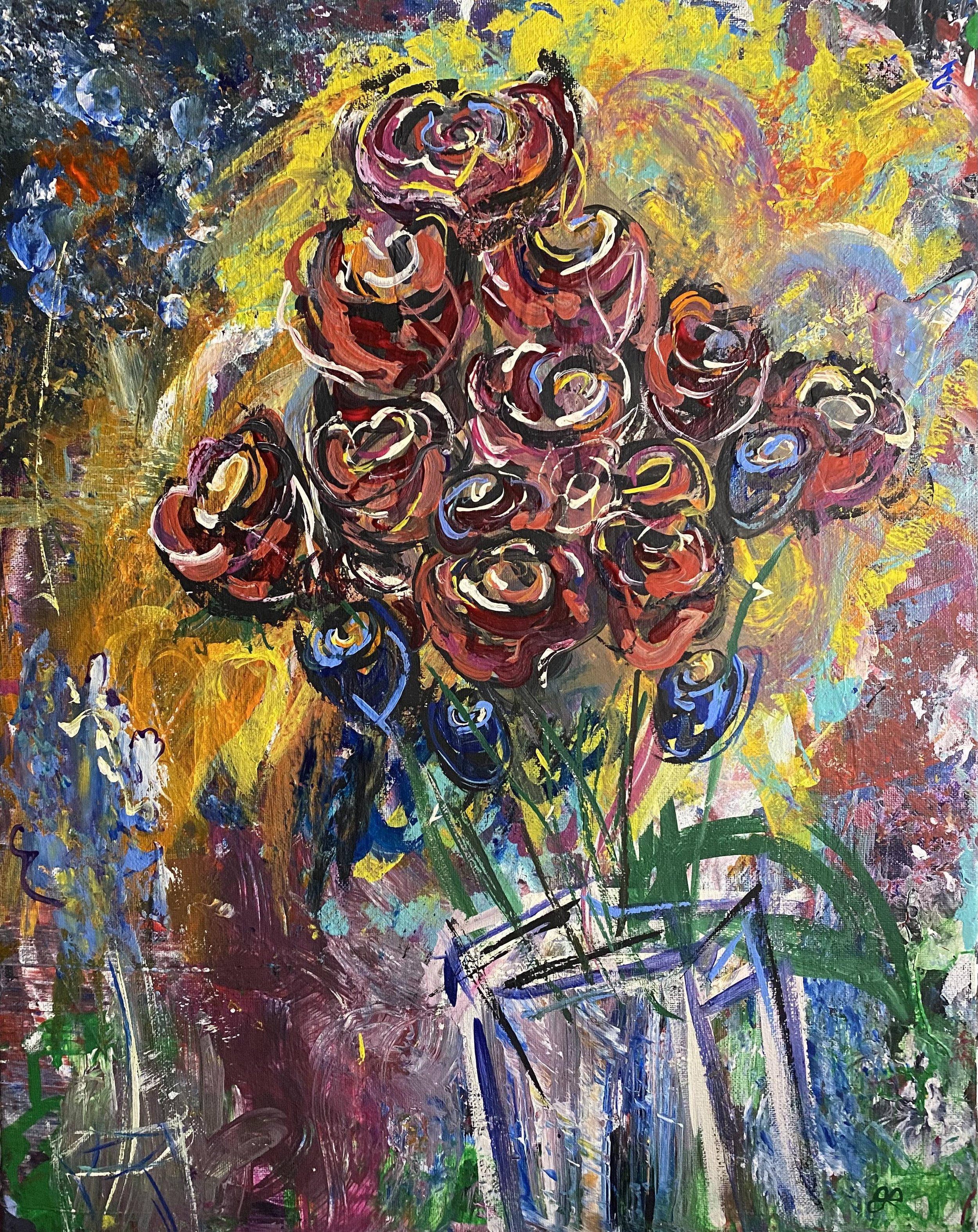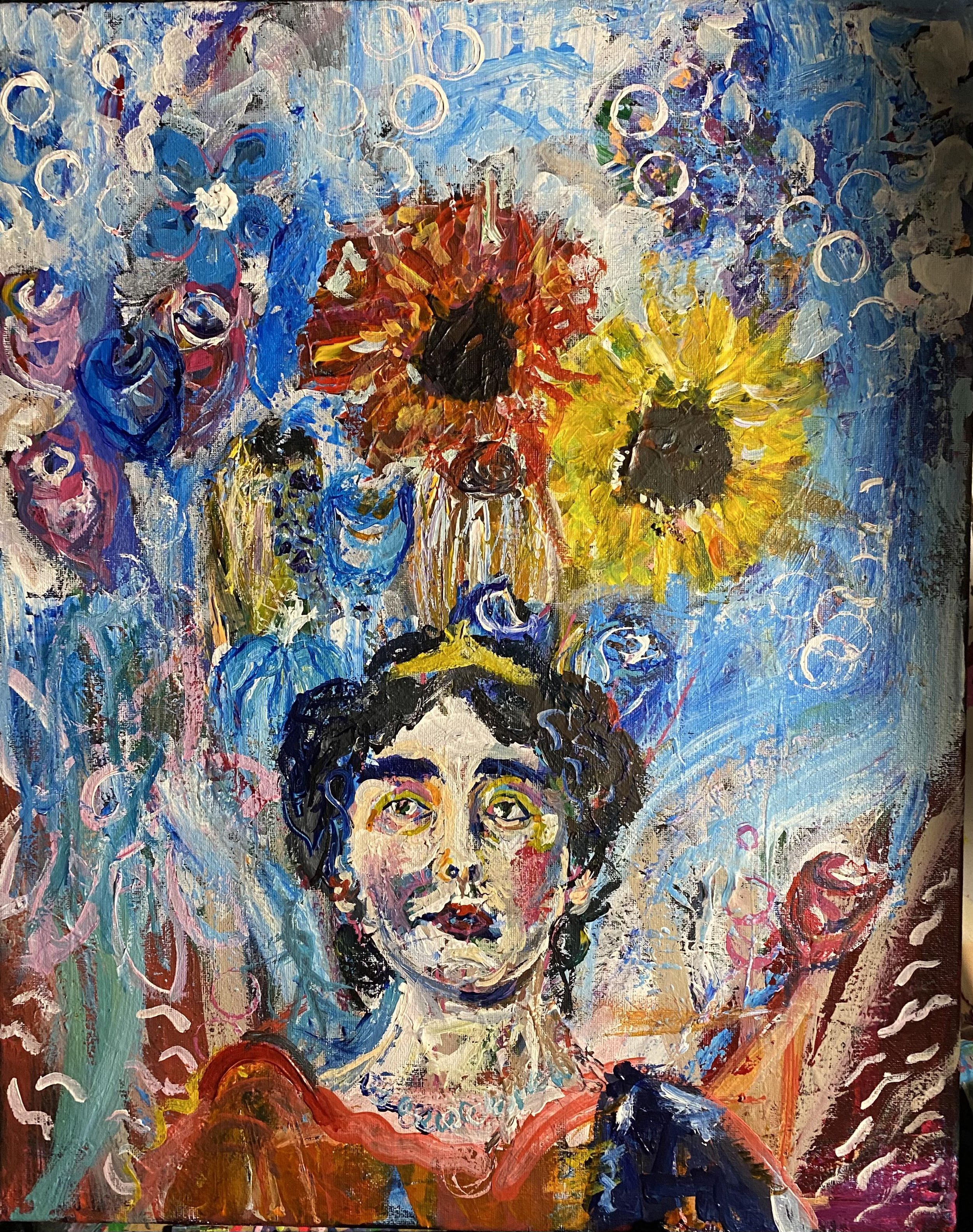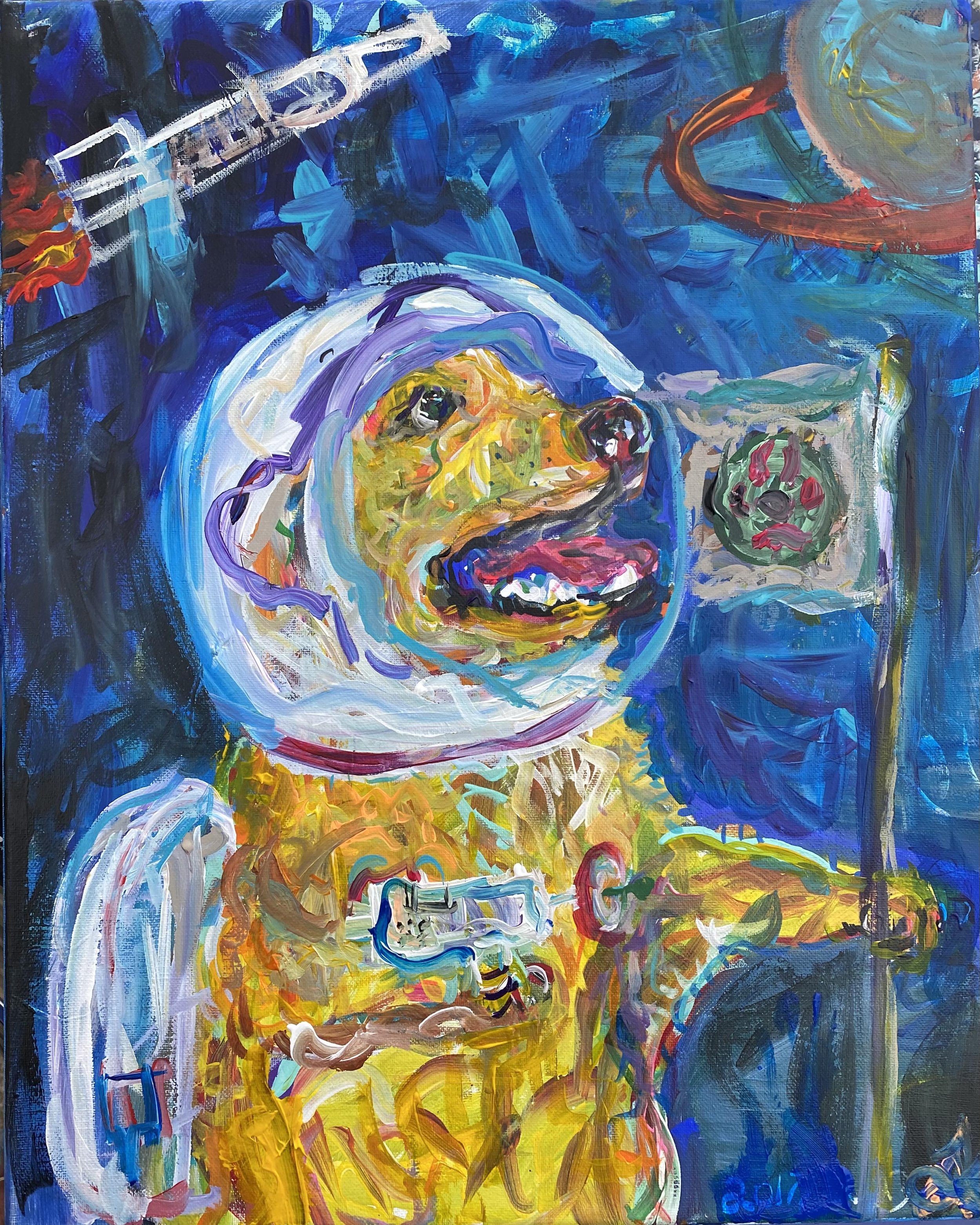Storyteller and artist, Jacob Sanderson, shares kindness, crafts identity through art
Jacob Sanderson presents his painting to Chef Manfred, commissioned by Schatzi’s Schnitzel Haus in Riley.
Creating art, creating self
Within the world of art, sometimes the most intricate masterpiece isn’t always a painting or a sculpture—it's the artist themselves. Jacob Sanderson’s life story embodies this notion, showcasing a profound journey of artistry shaped by adversity.
Sanderson recalls, after completing an Army contract, he started a circuitous college career. “After the military, I was at K-State doing research in psychology, and I was close to [getting] done with my degree and got a grant to do research during the summer.” While studying the field of psychology, however, he experienced a psychological crisis of his own. “I had an issue where my brain broke, and I had to be hospitalized for a week. I had developed this sense of anxiety that was permanent, and it became hard to retain ideas and recite information,” Sanderson recalls.
After his mental health crisis, he began a process of taking his internal struggle and forging it into art, conscious of the ways in which the artist’s lifestyle could also accommodate changes to his capacity or mental health. “It was an intentional identity shift into something that was flexible, able to accommodate occasional crisis,” Sanderson reflects. First, he changed his major to creative nonfiction because, he says, “it seemed like an area where you can encounter distress and turn it into a narrative.”
In a burst of creative energy, he had the idea to dismantle a $500 Mustang, followed by months of self-taught metalwork and a six-month stint at Manhattan Area Technical College, where he learned how to weld. As his artistic skills grew and he explored new mediums of creativity, he found that he was not simply manipulating metal; his process was about forging trust within himself.
An Education in Kindness
Jacob Sanderson’s education began long before he attended Kansas State University or Manhattan Area Technical College. Learning to be himself, learning to be kind, often happened outside the classroom, or in spite of it. Sanderson recalls that neither of his parents graduated high school, and while he was in elementary school, their demanding work schedules prevented them from being involved in his education. “I grew up as a feral child in Alpharetta, Georgia,” he comments. He recalls that all but one of his teachers allowed him to sleep in the back of the classroom.
Eventually, his parents divorced, creating even more financial pressure, followed by a move, in which Sanderson landed in a wealthy school district, despite experiencing poverty at home. With his parents’ limitations in helping him navigate his formational years, as well as an increasing sense of social alienation, he says he struggled to create a sense of family or even a sense of self. “Understanding the concept of family was a struggle. Sleepless nights and a lack of parental presence at school functions made forming connections a challenge,” he recalls.
All these experiences provided him with an education, however, one that began to teach him about who he wanted to be.
If he had to define his brand in a word, it would be “kindness,” he says, a tribute to his late mother, who died this past January. His mother’s struggle and strength, despite painful experiences, inspired his own commitment to open-heartedness and generosity “After my mother died, I realized how she had been treated, and I felt angry about it. She had a depth of kindness to her. She was never taught the value of herself…My mom became a strong person, but it was based on some [very painful] experiences.”
Her legacy fuels Sanderson’s mission to infuse kindness into his art, specifically through looking for ways to add value to others and bring them joy with his work.
Art as a Service
After experimenting with creative work as a writer and metal worker, Sanderson began to experiment with painting. At first, he was open to painting any subject. But soon, he found a special niche in painting animals. One of the ways he has made the most meaningful impact, and for which he is best known locally, is his quirky, colorful and personality-rich portraits of pets. He recalls that early in his career as a painter, after completing a pet commission, one of the recipients of his painting messaged him several times to share how much the painting of her deceased pet means to her.
The response stood out to Sanderson. He discovered that painting a pet for someone may be a way for them to not only remember a special family member, but also provide them with a way to heal. “People with troubled lives make strong pairings with their pets, and when their pets die and they can receive a painting of their pet, it [helps them feel better].”
He adds, “For me, art is a service industry, not a sense of self-discovery or expression. I might put some of me into products, but I am not extremely in what I have to say.”
Sanderson jokingly describes his style as “an abuse of color”. He adds, “I failed geometry twice, so I don’t have an intellectual concept of shapes, and I don’t use a shape framework or reference for shapes too often.”
Engaging regularly in online communities like ‘Tell me something good,’ ‘Manhappiness,’ and ‘Eat Drink Shop Manhattan’ became avenues for Sanderson to narrate and share his artistic journey in a hyperlocal way. These groups, platforms for positivity and connection, align with his values of kindness and engagement. The feedback he receives on his work encourages him to continue. “I get better at painting when I am talking to people because it takes more of my brain to talk, and the less you stop to acknowledge the negative brain state, the further you can get with a process.”
Jacob Sanderson’s story is a testament to the transformative power of creativity, not only for its impact on a viewer but for the ways that his work reflects his own self-making. “I think I will always paint because it’s an efficient medium for me,” he muses. “I think I will eventually write, but that’s what you do when you’re important enough for people to care what you have to say. I am more interested in the brand portion than the business.”
As his portfolio grows and more Manhattanites boast a Sanderson original on their walls, the portrait of Jacob Sanderson the person evolves as well, layer by layer: a storyteller, a painter, an artist, and most of all, a beacon of kindness in a world thirsty for color and compassion.
Join the conversation with Jacob online in his group, Mental and Material Art, and see works in progress and meet other members of the arts community.
All paintings in article gallery here are credited to Jacob Sanderson; all photos and images of Jacob Sanderson’s work have been shared with his permission.


